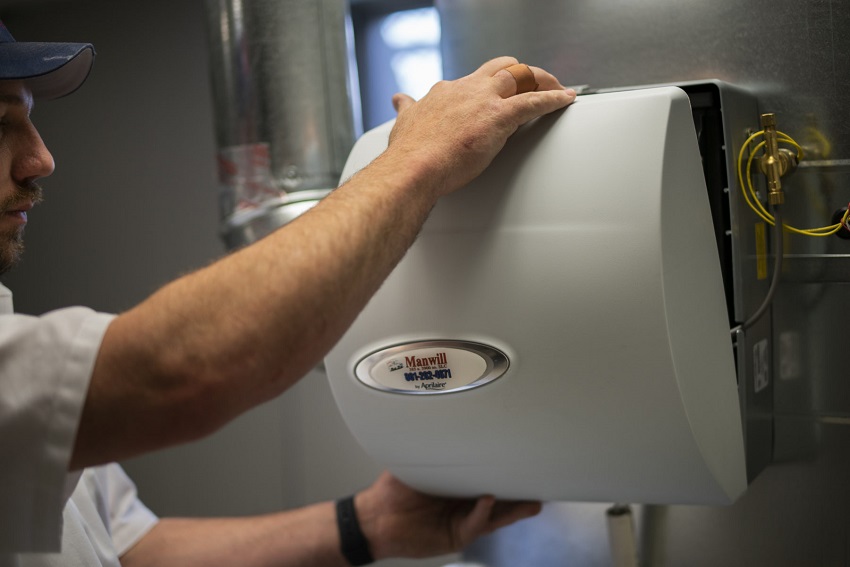How to install humidifier?

5 places for the perfect honeymoon destinations
February 20, 2022
Best travel suitcase on the market
March 19, 2022A humidifier is a great way to help with your dry air and allergies. You can also purchase one that has an app, so you can change the settings from anywhere!
Humidifiers are used to maintain the moisture in the air so that it is conducive to the growth of plants. A humidifier increases the humidity level inside your home and improves the quality of air inside your house. This article gives you a detailed explanation of how to install humidifier and use it. Keep reading: Humidifiers without filters
Table of Contents
ToggleHow to install humidifier?
To install humidifier in your home, you will need the following items:
- Humidifier unit
- Hose or tubing
- Mounting bracket (optional)
- Wall anchors (optional)
- Screws
- Leveler (optional)
Step 1: Decide on the Location of the Humidifier Unit and Tubing The first step is to decide on the location of the humidifier unit and tubing. The humidifier should be placed in an area where it will have easy access to a power outlet and water supply. The tubing should be routed to an area where the humidity can be dispersed effectively.
Step 2: Connect the Tubing to the Humidifier Unit Next, connect one end of the tubing to the humidifier unit and secure with a clamp or hose connector. Make sure that the tubing is attached tightly to avoid any water leakage.
Step 3: Route the Tubing to the Dispersal Area Next, route the other end of the tubing to the dispersal area. You can use duct tape or cable ties to secure it in place. If you are using a mountable humidifier, attach the mounting bracket now.
Step 4: Connect Tubing to Water Supply and Power Outlet Finally, connect one end of the tubing to your water supply and the other end to a power outlet. Turn on the humidifier and adjust the settings according to your requirements.
Step 5: Once the humidifier is installed, it is important to keep track of the humidity levels in your home. You can use a hygrometer to measure the humidity levels or download a Humidity Tracker app on your phone. Keep reading Where to place humidifier?
Guidelines to use a humidifier
- Check the owner’s manual that comes with your humidifier for specific instructions on how to use it.
- Make sure to clean and disinfect your humidifier regularly according to the manufacturer’s instructions to prevent the growth of bacteria and other contaminants.
- Keep an eye on the humidity levels in your home and adjust the settings as needed. Too much humidity can cause problems such as mold growth, while too little humidity can cause respiratory problems.
- If you have allergies, asthma, or other respiratory problems, consult your doctor before using a humidifier.
- Never put water in the humidifier tank while the unit is plugged in.
- Keep children and pets away from the humidifier when it is in use.
- Do not use a humidifier if the water tank is cracked or damaged.
- Beware of fires caused by humidifiers. Follow the manufacturer’s instructions for safely using your humidifier.
- If the humidifier is not mounted to a wall, make sure it is placed on a stable surface and away from furniture and curtains.
- Do not operate the humidifier if it is damaged or wet.
Types of Humidifier
There are many types of humidifiers on the market. Let’s discover them
Warm Mist Humidifier: A warm mist humidifier releases hot water vapor into the air. This type is effective in treating respiratory problems such as congestion and asthma. It is also helpful in relieving sinus pressure and headaches caused by dryness. Warm mist humidifiers are available as the table- top models or floor-standing units.
Cool Mist Humidifier: A cool-mist humidifier releases a fine mist into the air. This type is effective in treating allergies and respiratory problems. It also reduces static electricity in the air. Cool mist humidifiers are available as table-top models, room dehumidifiers, or portable units that can be taken with you on trips.
Steam Vaporizer: A steam vaporizer converts water to steam, which is then released into the room. This type is effective in treating respiratory problems and helping to clear nasal passages. Steam vaporizers are available as table-top models or floor-standing units.
Ultrasonic Humidifier: An ultrasonic humidifier uses high-frequency sound waves to create a fine mist. Ultrasonic humidifiers are quiet and energy-efficient. They are available in table-top, portable, or whole-house models.
Whole-house humidifier: A whole-house humidifier is installed in your home’s air conditioning system. It distributes humidity throughout the entire house. A whole-house humidifier is helpful in treating respiratory problems, reducing static electricity, and moisturizing skin and hair.
Portable humidifier: A portable humidifier is small enough to be carried from room to room. It is effective in treating respiratory problems and moisturizing skin and hair.
Central humidifier: A central humidifier is installed in your home’s heating and cooling system. It distributes humidity throughout the entire house. A central humidifier is helpful in treating respiratory problems, reducing static electricity, and moisturizing skin and hair.
Impeller humidifier: An impeller humidifier uses a rotating disk to disperse water into the air. Impeller humidifiers are available as table-top or portable models.
Wick humidifier: A wick humidifier uses a porous material, such as cotton to absorb water. The water is then dispersed into the air. Wick humidifiers are available in table-top or portable models.
Vicks humidifier: A Vicks humidifier is a type of wick humidifier that uses aromatic Vick’s VapoPads to dispense medication and moisture into the air. A Vicks humidifier is helpful in treating respiratory problems and reducing coughing.
Evaporators: Evaporative humidifiers use a fan to draw air through a moistened filter. The air is then dispersed into the room. Evaporative humidifiers are available as table-top or portable models.
Conclusion
It is important to install humidifier in your home, especially if you have asthma or other respiratory problems. A humidifier can help relieve congestion and dry out your air. There are several types of humidifiers available on the market today, so it’s important to choose the right one for your needs.




